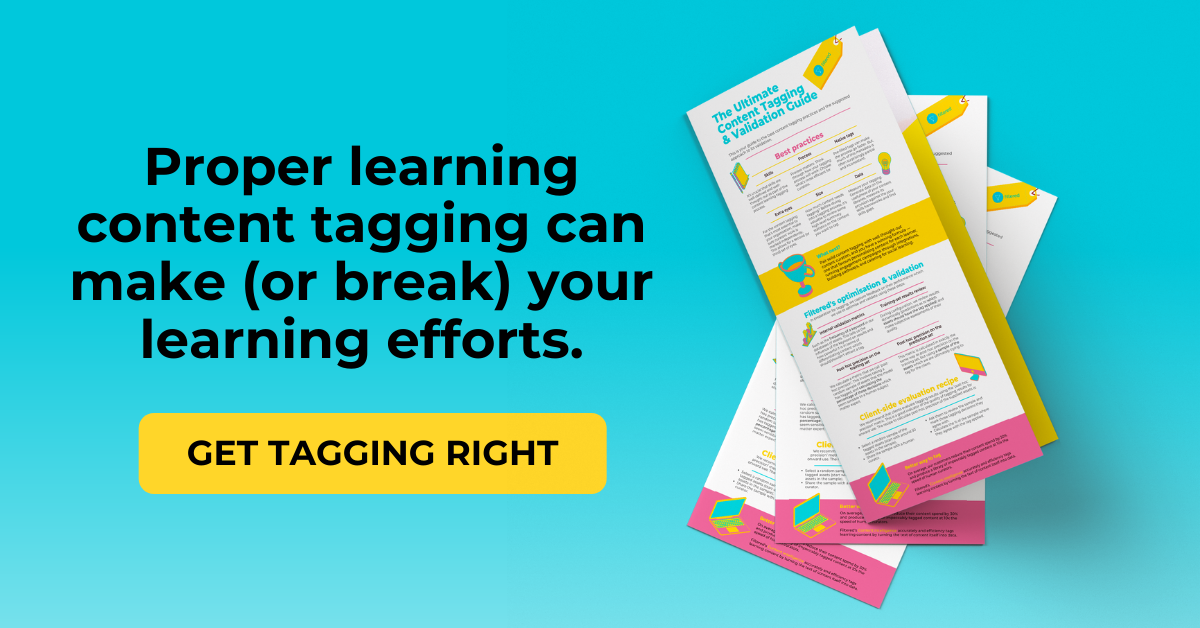In the 18th century, Alexander Pope famously wrote that “a little learning is a dangerous thing”. It’s important to note that he didn’t have YouTube. In the 1700s, the amount of information an average person would come across in their lifetime wasn’t much more than is contained in a daily edition of the New York Times. In the 21st century, a lot of learning has become just as dangerous as too little because there’s just too much to handle.
To watch every video on YouTube now would take you 60,000 years. But that target’s not static - every minute, it runs away as 500 hours of fresh video is added. Not every clip on YouTube is learning, but it’s safe to assume that there’s enough learning content on there to last anyone a few lifetimes.
YouTube and Google aren’t alone in being overrun by content. While comparatively smaller, the corporate learning industry is sleeping on its own content overload issue. It’s unaware that this overload is the culprit behind more than a few of it’s most persistent problems. And, as of now, it’s far less equipped than the giants to deal with it.
Corporate learning’s hidden numbers
The corporate eLearning market is projected to grow at a compound annual growth rate of 11.3% by 2025. As the market grows, more and more learning content is being produced, shared, and stored. And it’s being added to systems far faster than it’s being taken away.
Many businesses aren’t aware of how much this problem has snowballed. LinkedIn Learning has about 20,000 assets, Skillsoft 40,000, MindTools 3000, GetAbstract 8,000, and there are over a straight month’s worth of TedTalks available.
These numbers might not seem as astronomical as Google or YouTube’s stats, but they’re still well outside the bounds of manageable. And learning has a couple of extra hurdles to consider.
The first is time. A month (specifically 43.75 days) of TedTalks doesn’t sound as impossible as 60,000 years of YouTube. But, the average employee only has 24 minutes a week to learn. So, if an employee dedicated their entire career’s learning to just TedTalks, in 50 years, they might be able to get through them all. And that’s if TedTalks stopped making new learning content today.
No employee needs to watch every TedTalk, or read every bit of content on LinkedIn learning, but the numbers are so big and the time so limited that even a small fraction of this learning content is still far more than a learner can handle.
The second consideration is motivation. Studies have found that motivation negatively correlates with perception of overload - the less people are motivated the more easily they’ll feel overloaded. Unfortunately, a large proportion of employees aren’t hugely motivated to learn - in the UK, only 40% of employees say they’re motivated to do in-work training.
So, to get learners to commit any of their precious 24 minutes, learning programmes and platforms have to work harder than any recreational site to stem content overflow.
Which learning providers best align with your organisation's skills?
Use our free content library benchmark tool to find out now.
The Boolean solution
Even the content multitudes of Google can be easily felled. All it takes is a little extra definition in the form of Boolean logic, the logic that underpins our entire digital world. Hugely simplified, boolean logic allows you to break down a search strategy into simple combinations of 4 terms: “and” (coffee and tea), “not” (coffee, not tea), “or” (either coffee or tea, or both), and “Xor” (either coffee or tea, but not both). And these expressions give you the tools to break down even the biggest learning content overload problem.
This can be proved in with the aid of Coldplay song titles. If you type “yellow” into Google, you get approximately 6,790,000,000 results. Search “yellow paradise” and it’s cut down to 43,000 results (mostly spa retreats). “Yellow paradise clocks” and the number’s reduced to 102. Just two extra terms and the unfathomable billions are reduced to a borderline-manageable (depending on your disposition to Coldplay) 102 results.
By the same token, the content overload faced by most businesses can be solved by nuancing the search term. If employees, as they are often forced to, search for something impossibly broad like ‘leadership’, they’ll be overwhelmed by the response. But, if they dig down in their specification, to ‘authentic’ or ‘transformative’ or ‘empathetic’ leadership, they’ll be provided a level of content they can actually handle.
The tagging problem
So, all you need to do to tame a mass of learning content is search for the right terms. The problem is, most learning systems don’t have the data to answer that search. You can only get results for yellow paradise clocks because Google has determined that particular sites cater to that very specific need. In most businesses, only 20% of information is available within a search mechanism. As a partial consequence of this, 30% of employee time is spent searching for things.
But, even when there is a search function, the engine rarely has access to sufficiently in-depth information to narrow things down. Most businesses haven’t tagged which of their leadership articles are ‘transformative’ or ‘empathetic’. And without this thorough tagging most search systems are insufficient. What if an article is a perfect example of “authentic” leadership but never uses the word? It might be a perfect bit of learning but, like a tree falling in a forest with nobody around, it doesn’t matter if the people who need it can’t appreciate it.
What to do about it
Effectively tagging your learning content easier said than done. As we see it, there are two main steps. The first is working out which tags you actually need. There’s no point wasting resources highlighting a skill that doesn’t support your business plan. Building a skills framework that aligns with business goals is a lot easier with the right data.
The second is curation. This is the means (manual, automated, or mixed) by which you judge the purpose and value of each bit of learning according to its contents, and tag, sort and refine it based on your skills framework. We do this at scale using our Content Intelligence technology.
After these two foundational steps come the more well-appreciated (and essential) parts of learning: personalising content for each learner, running engagement campaigns through integrations, building pathways, and catering for social learning.
But, without this first mass curation, all the best motivations and cleverest features will be blunted by the number one problem with learning content: overload.



